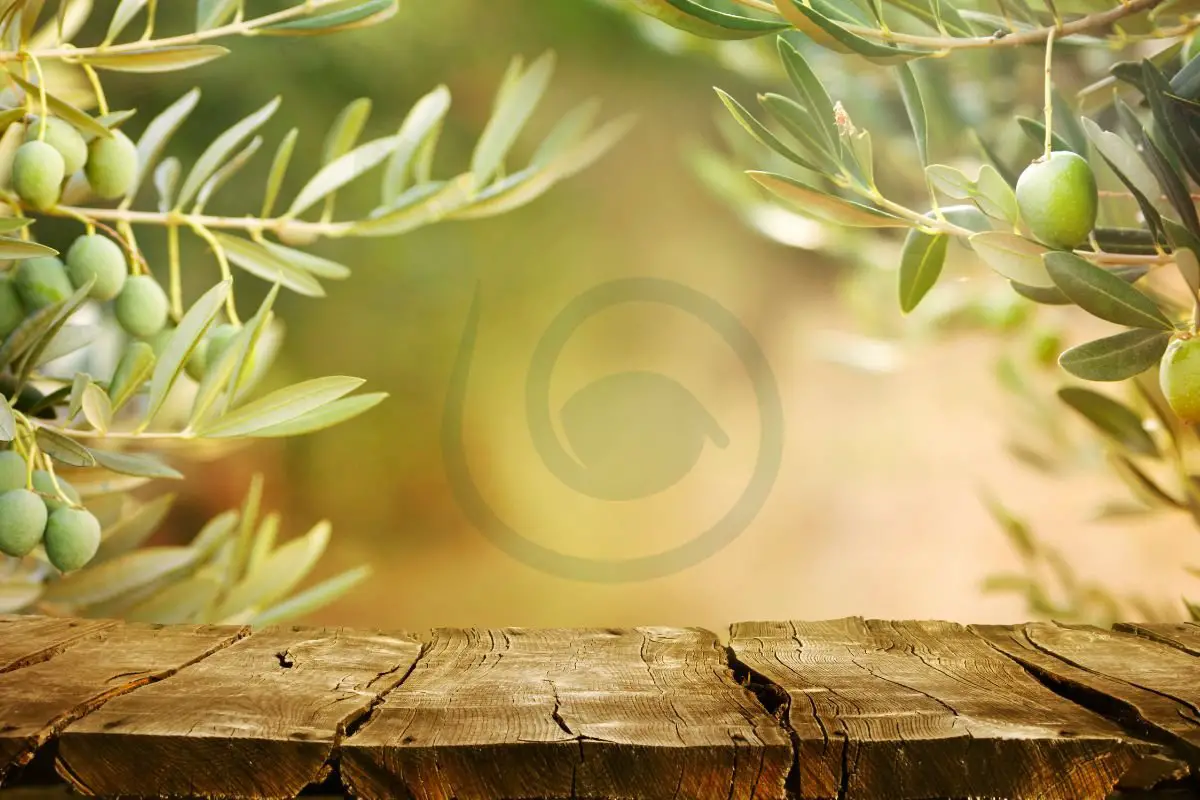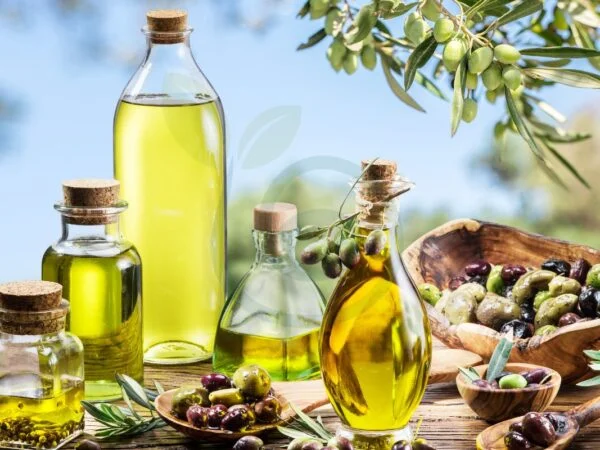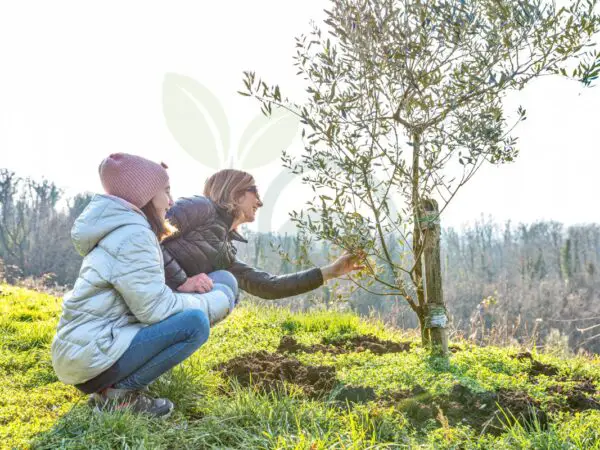Curious about the timeline for your olive tree to bear fruit? While some cultivars may surprise you with fruits in just a few years, others play the long game, taking up to ten years before showing results. Patience is key when nurturing these trees; their growth pace can vary significantly based on factors like climate and care. Understanding this process can help manage expectations and plan ahead for a fruitful harvest season. Let's delve into the fascinating journey of olive trees from saplings to mature fruit-bearing plants.
Key Takeaways
- Patience is Key: Olive trees can take several years to start bearing fruit, so patience is essential for those cultivating them.
- Proper Care Yields Results: By following recommended practices and providing optimal cultural conditions, you can improve the fruit production of your olive trees.
- Tailored Care is Important: Understanding the specific variety of olive tree you have and its growth patterns can help you tailor your care practices for better results.
- Regular Pruning is Beneficial: Pruning plays a significant role in the health and fruit production of olive trees, so incorporating it into your care routine is crucial.
- Indoor vs. Outdoor Care: Different care approaches are needed for indoor and outdoor olive trees, so be mindful of the unique requirements each setting demands.
- Consistent Monitoring is Key: Factors like watering, sunlight, and soil quality directly impact the fruit production of olive trees, emphasizing the need for consistent monitoring and adjustment of care practices.
Olive Tree Fruit Bearing Timeline
Growth Stages
Olive trees progress through various growth stages, starting with seed germination and advancing to seedling growth, vegetative growth, and finally reproductive growth. These stages are crucial for the tree's development and fruit-bearing capabilities. Factors like climate conditions and overall care influence how quickly olive trees move through these growth phases. Understanding each stage is vital for nurturing olive trees effectively.
The different growth stages of olive trees play a significant role in their eventual fruit production. For instance, during the initial seed germination phase, the roots start developing underground before sprouting above the soil as a young seedling. As time progresses, proper care ensures that the tree transitions smoothly into vegetative growth where it focuses on leaf and branch development before entering reproductive growth to bear fruits.
Time to Fruit
Typically, olive trees require patience as they take between 3 to 5 years from planting to start producing fruits. The timeline can vary based on factors such as the specific variety of olive tree being grown, environmental conditions like sunlight exposure and soil quality, as well as care practices implemented by growers. It's essential for growers to understand that nurturing an olive tree from planting until it reaches maturity can be a waiting game but ultimately rewarding once it starts bearing fruits.
The time to fruit for an olive tree largely depends on external influences like adequate watering routines throughout its early years post-planting or ensuring proper pruning techniques are employed at appropriate times during its development cycle. By maintaining consistent care practices tailored to support optimal growth conditions for the specific variety being cultivated, growers increase their chances of reducing the time taken for their olive trees to mature enough for fruit production.
Olive Tree Characteristics and Growth
Tree Types
Olive trees come in two main types: self-pollinating and cross-pollinating. Self-pollinating olive trees, also known as "fruiting," can bear fruit independently without the need for another tree's pollination. On the other hand, cross-pollinating olive trees, or "non-fruiting" varieties, require a compatible pollinator nearby to ensure successful fruit production. For instance, Arbequina is a self-pollinating variety that doesn't rely on neighboring trees for pollination.
Growth Conditions
For optimal growth and fruit production, olive trees thrive in climates similar to the Mediterranean region—characterized by mild winters and hot summers. These trees prefer well-drained soil with good fertility levels within a pH range of 6 to 8. Providing ideal growth conditions involves ensuring adequate sunlight exposure while protecting the tree from frost damage during colder seasons. By meeting these requirements, olive tree growers promote healthy development essential for robust fruit-bearing capabilities.
Lifespan
The lifespan of an olive tree is truly remarkable; with proper care, these trees can live for centuries. Typically ranging from 300 to 600 years under favorable conditions, their longevity makes them highly valuable assets in orchards and landscapes alike. With age-old specimens found throughout regions like the Mediterranean basin serving as living testaments to their enduring nature.
Planting and Caring for Olive Trees
Planting Time
When considering olive trees, it's crucial to choose the right time for planting. Optimal planting periods are during spring or fall when the soil is warm and workable. This allows the tree roots to establish themselves before facing harsh weather conditions. Winter months should be avoided as the ground may be frozen or waterlogged, hindering root development.
Planting olive trees in well-drained soil is essential for their growth. These trees thrive in various soil types such as sandy, loamy, and clay soils. Enhancing the soil with organic matter can boost fertility and drainage, aiding in optimal tree development.
Soil Requirements
Olive trees have specific watering needs that evolve over their lifespan. While they become drought-tolerant once matured, young olive trees require consistent watering to establish deep root systems efficiently. Deep but infrequent watering sessions encourage robust root growth while preventing waterlogging issues.
Monitoring soil moisture levels regularly is key to ensuring olive trees receive adequate hydration without risking overwatering. Adjusting the watering frequency based on seasonal changes and weather conditions helps maintain tree health throughout its growth stages.
Recommended Practices for Olive Tree Cultivation
Pruning Techniques
Pruning olive trees is crucial for their health and productivity. Timing plays a significant role in pruning, with late winter or early spring being the ideal periods to trim the trees. This timing allows for new growth stimulation and helps maintain the tree's desired shape. Avoiding pruning during extreme weather conditions is essential to prevent unnecessary stress on the tree.
Different methods of pruning can be employed based on factors like tree age, variety, and desired shape. Popular methods include open-center pruning, central leader pruning, and modified central leader pruning. Each technique offers unique benefits such as improved air circulation, better sunlight exposure, and increased overall tree productivity.
Fertilizing Practices
Fertilizing olive trees is essential to ensure they receive all necessary nutrients for healthy growth and fruitful production. Regular fertilization using organic options like compost or well-aged manure provides a natural source of nutrients that benefit the trees' development throughout the year. Applying fertilizer in early spring and late fall ensures a consistent supply of nutrients that support optimal growth.
Optimal Cultural Conditions for Olive Trees
Climate Preferences
Olive trees flourish in Mediterranean climates, preferring mild, wet winters and hot, dry summers. They can handle various temperatures but are sensitive to extreme cold or heat. Understanding these climate preferences is vital for successful olive tree cultivation. For instance, regions like Italy and Spain provide ideal conditions for olive trees due to their Mediterranean climate.
To thrive and produce fruit optimally, olive trees require full sun exposure daily—ideally 6 to 8 hours of direct sunlight. Adequate sunlight aids in photosynthesis crucial for the tree's energy production. Without enough sunlight, the tree may struggle to grow properly and yield fruits efficiently.
Temperature Tolerance
Most olive tree varieties exhibit good temperature tolerance, enduring as low as 15°F (-9°C). However, prolonged freezing temperatures can harm or even kill these trees. Protecting young olive trees from frost during winter months is essential for their survival and long-term health. This protection ensures that the trees have a better chance of reaching maturity and bearing fruit successfully.
Understanding How Olives Grow
Flowering Process
Olive trees develop small, inconspicuous flowers that rely on wind pollination. This process typically initiates in late spring or early summer, varying based on the olive tree variety and environmental conditions. Successful flower pollination is vital for fruit set and eventual olive production. For example, the Arbequina olive variety starts flowering in late April to early May.
Pollination
Certain types of olive trees are self-pollinating, meaning they can bear fruit without external cross-pollination from another variety. Cross-pollination between compatible varieties can enhance fruit set and overall yield significantly. Bees and other insects play a crucial role in pollinating olive flowers by transferring pollen between blooms efficiently.
Fruit Development
Following successful pollination, olives begin to form on the tree as fruits start their growth journey through various stages like cell division, enlargement, and ripening. Proper care during this phase is essential to ensure high-quality olives at harvest time. The Kalamata olive variety takes around 6-8 months from bloom to mature fruit ready for harvest.
Varieties of Olive Trees and Their Harvest
Early Varieties
Early-maturing olive varieties, such as Arbequina and Manzanillo, bear fruit in 3 to 4 years. They ripen early in the season for an early harvest. These olives are perfect for those eager to see results relatively quickly after planting.
On the other hand, late-maturing olive trees like Picual and Koroneiki may take 4 to 5 years or more before producing fruit. These varieties have a longer growing season and mature later in the year compared to their early counterparts. If you're patient and willing to wait a bit longer for your first harvest, these trees can be rewarding once they start yielding olives.
Yield Differences
The yield of olive trees can vary significantly based on various factors like variety, age, growing conditions, and care practices. Mature olive trees can produce anywhere from 20 to 200 pounds (9 to 91 kilograms) of olives per year. Understanding these differences is crucial as it helps manage expectations regarding when you'll start harvesting olives and how much you can expect from your olive groves.
-
Pros:
-
Early-maturing varieties provide quicker results.
-
Late-maturing types offer rewards with patience.
-
Understanding yield variations aids in planning harvests effectively.
-
Cons:
-
Late-maturing varieties require more time before bearing fruit.
-
Yield fluctuations mean that production quantities can differ each year.
Pruning Effects on Olive Trees
Fruit Quality
High-quality olives are essential for producing premium olive oil. The size, color, texture, flavor, and oil content of the fruit depend on various factors like variety, maturity stage, growing conditions, and post-harvest handling. For example, a well-pruned tree that receives adequate nutrients will produce larger olives with richer flavors and higher oil content. Proper care throughout the cultivation process is crucial to ensure optimal fruit quality.
Pruning plays a significant role in determining the yield they produce. Well-pruned trees that receive proper nutrition tend to bear more fruit compared to neglected or poorly managed ones. By implementing effective pruning techniques and providing essential nutrients through fertilization, olive growers can boost their tree's productivity significantly over time.
Yield Impact
Pruning isn't just about shaping the tree; it directly impacts the quantity of olives harvested each season. Regular monitoring and adjustment of cultural practices help maximize tree productivity by ensuring that resources are efficiently utilized for fruit production. Neglecting pruning can result in overcrowded branches that hinder sunlight penetration and airflow - both critical for healthy fruit development.
-
Pros:
-
High-quality olives lead to superior olive oil.
-
Well-pruned trees produce larger fruits with better taste.
-
Effective pruning boosts overall tree productivity significantly.
-
Cons:
-
Improper pruning can reduce yields.
Tree Health
Maintaining the health of olive trees is vital for sustainable cultivation practices. Regular inspection for pests, diseases, and nutrient deficiencies allows growers to identify issues early before they escalate into major problems affecting yield or tree vitality. By implementing proper care routines such as irrigation management and pest control measures alongside regular inspections helps promote overall tree health.
- Monitor regularly for pests & diseases.
- Adjust cultural practices based on observations.
- Implement proper irrigation management techniques.
Indoor and Outdoor Care for Olive Trees
Indoor Care Tips
Growing olive trees indoors requires adequate sunlight from a south-facing window or grow lights. Regular misting helps increase humidity levels, crucial for indoor tree health. Maintaining proper temperature and ventilation is essential to ensure the well-being of indoor olive trees.
Adequate sunlight is vital for indoor-grown olive trees, promoting healthy growth and fruit production. For example, placing the tree near a sunny window can provide the necessary light exposure it needs to thrive indoors. Using supplemental grow lights can help mimic natural sunlight conditions when growing olives inside.
Outdoor Growing Guide
Outdoor cultivation of olive trees necessitates selecting a suitable planting location with full sun exposure and well-drained soil. Proper spacing between outdoor olive trees allows for adequate air circulation and optimal sunlight penetration, fostering healthy growth and fruit development in the long run.
Regular watering is crucial for outdoor-grown olive trees to ensure they receive sufficient moisture during dry periods. Pruning outdoor olive trees helps maintain their shape, promotes airflow within the canopy, and encourages fruit-bearing branches to develop properly over time. Furthermore, fertilizing outdoor olive trees provides essential nutrients that support robust growth and fruitful yields season after season.
Factors Affecting Fruit Production in Olive Trees
Environmental Stress
Olive trees are sensitive to environmental stress like drought, extreme temperatures, and high winds. To combat this, proper irrigation methods should be employed to ensure the trees receive adequate water. Providing shade during heatwaves can prevent sun damage to the plants. Windbreaks can shield olive trees from strong winds that may hinder fruit production.
Monitoring weather conditions is crucial in safeguarding olive trees against environmental stressors. By keeping a close eye on weather forecasts, farmers can take preemptive actions such as adjusting irrigation schedules or providing additional protection during harsh conditions. These measures help minimize the negative impact of environmental stress on olive tree health and ultimately promote fruitful outcomes.
- Implement proper irrigation techniques
- Provide shade during heatwaves
- Utilize windbreaks for protection
- Monitor weather conditions regularly
Pests and Diseases
Pests like olive fruit fly, scale insects, aphids, and mites pose significant threats to olive tree health and fruit production. Regular monitoring of these pests is essential for early detection before infestations become severe. Implementing appropriate pest control measures promptly can help manage pest populations effectively.
In addition to pests, diseases such as olive knot, verticillium wilt, and peacock spot can also affect olive tree productivity negatively. Farmers must stay vigilant by inspecting their trees routinely for signs of disease development. Early identification enables timely intervention with suitable treatments to prevent further spread within the orchard.
You've now uncovered the secrets of olive tree cultivation, from planting to pruning and everything in between. Understanding how olives grow and the factors affecting their fruit production equips you to nurture your olive trees successfully. Remember, patience is key; like a fine wine, good things take time. So, tend to your olive trees with care and watch them flourish.
Now that you're armed with knowledge about olive trees, it's time to roll up your sleeves and get gardening! Put these tips into action, experiment with different practices, and see what works best for your olive trees. With dedication and a green thumb, you'll soon be enjoying the fruits of your labor. Happy gardening!
Frequently Asked Questions
How long does it take for olive trees to bear fruit?
Olive trees typically start bearing fruit after 3-5 years of growth. Factors like tree age, variety, and growing conditions can influence the timeline. Be patient with your olive tree; good things come to those who wait!
What are the optimal cultural conditions for olive trees?
Olive trees thrive in sunny locations with well-drained soil. They prefer a Mediterranean-like climate with hot, dry summers and mild winters. Ensure proper irrigation, avoid waterlogging, and provide adequate sunlight for optimal growth and fruit production.
How do pruning practices affect olive tree fruit production?
Pruning plays a crucial role in shaping olive tree canopy structure and promoting better fruiting. Proper pruning encourages new growth, enhances air circulation within the canopy, improves light penetration to lower branches, and helps maintain overall tree health for abundant fruit yield.
Can I grow olive trees indoors?
While young olive plants can be grown indoors near bright windowsills or under grow lights, mature olive trees require outdoor cultivation due to their size requirements and need for direct sunlight. Consider starting indoors but plan to transition your plant outside as it grows.
What factors can affect the production of fruits in olive trees?
Several factors impact the fruit production of olive trees including weather conditions (temperature fluctuations), pollination success (wind or insects), disease susceptibility (olive knot), nutrient availability (fertilization), water stress levels (irrigation management), and pruning methods employed on the tree.
Image Source: Paid image from CANVA




